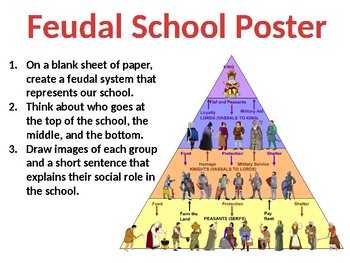


Individual warlords seized local lands, and there was no way to control all the regions. This forms the fourth tier of the Feudal pyramid.įeudalism arose in western Europe because the security of the Roman Empire had collapsed. In exchange, the villeins and serfs would work the land, providing food and services to their Lord, the knight. As part of the agreement, the knights also had to protect their Lord's (the tenants-in-chief 's) manor from attack.Įach knight would keep as much of his fief as he liked, and the rest would be divided up among his villeins and serfs. This forms the third tier of the Feudal pyramid. This forms the first and second tiers of the Feudal pyramid.Įach tenant-in-chief would divide up his fief among his knights, in return for loyalty, protection and military services. He would grant his favoured noblemen, the tenants-in-chief (Dukes, Earls and Barons), land which included houses, animals, tools and even peasants. In exchange, the tenants-in-chief would swear an oath of allegiance to the King, along with supplies of soldiers and money. So what is Feudalism and how did it work? As defined above, Feudalism incorporates a pyramid of social hierarchy, with the King sitting at the top. Peasants who were not freemen, were owned by the Lord, and were sold with the land upon which they worked. Serfs did not have any land, instead they worked on their Lord's manor house lands, providing common services.įree Peasants rented land from their Lord and had freedom to move about. Villeins held land given to them by their Lord, the knight, but were not allowed to sell it. Villeins and Serfs were Peasants who belong to the Knights in the fourth tier of the Feudal pyramid.
Definition of feudalism in the middle ages free#
Vassals are the free men who hold a fief given to them by their Lord. In Feudalism, the fief is land granted, and all that comes with it (houses, peasants etc).

Fiefs are a source of income, that is granted to a person of lower status (Vassal), in exchange for services.


 0 kommentar(er)
0 kommentar(er)
